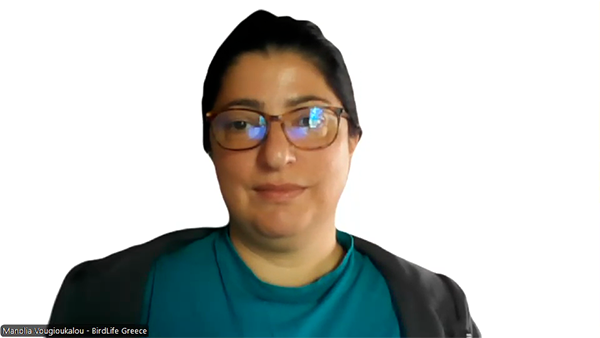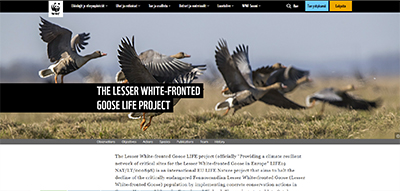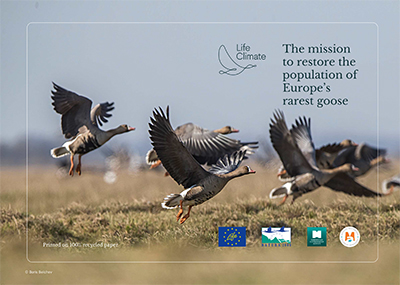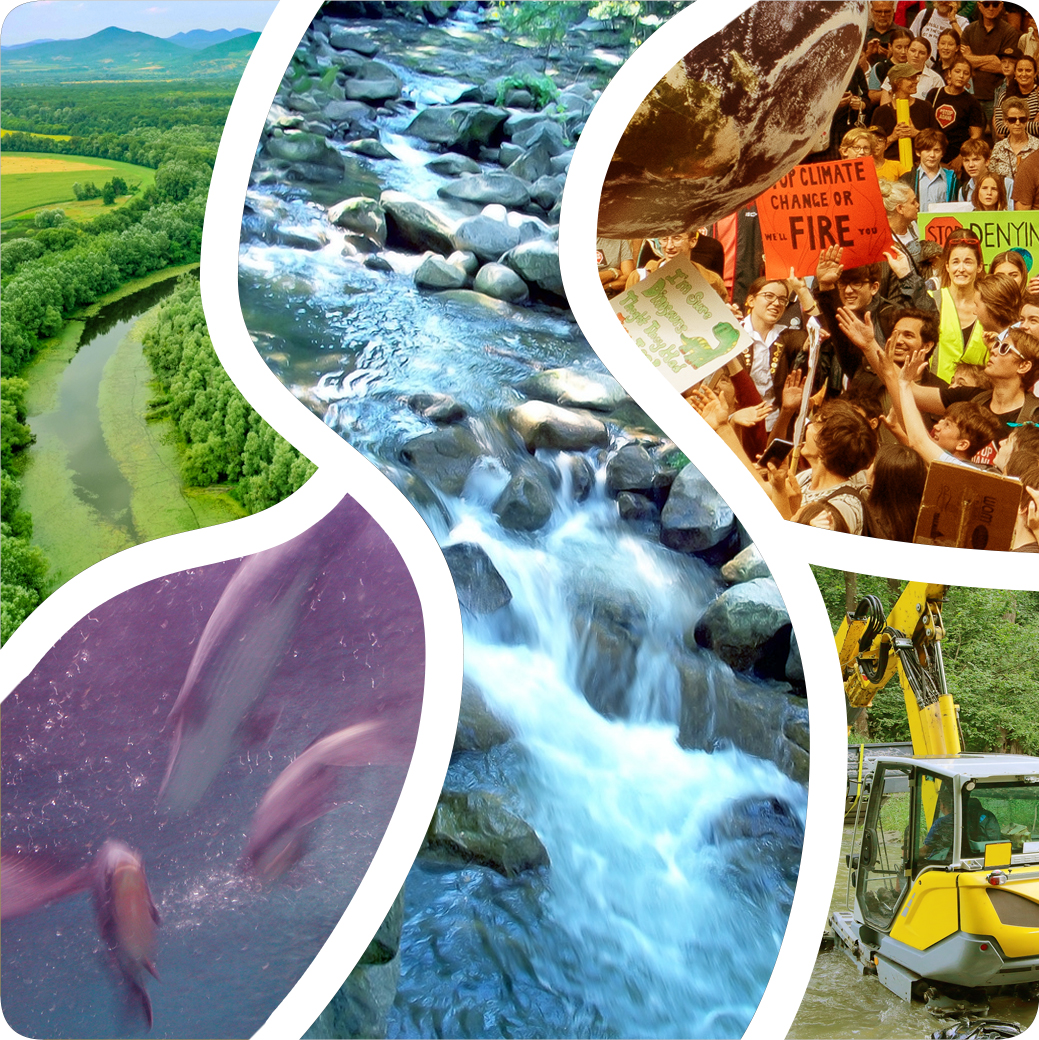Manolia Vougioukalou
Project Coordinator Hellenic Ornithological Society / BirdLife Greece
NGOs & Civil Society

My Projects

 LIFE+ Nature Programme for the Little Goose - um scale fresh water restoration project
LIFE+ Nature Programme for the Little Goose - um scale fresh water restoration project
- Key project facts
The Lesser White-fronted Goose LIFE project (officially “Providing a climate resilient network of critical sites for the Lesser White-fronted Goose in Europe” LIFE19 NAT/LT/000898) is an international EU LIFE Nature project that aims to halt the decline of the critically endangered Fennoscandian Lesser White-fronted Goose (Lesser White-fronted Goose) population by implementing concrete conservation actions in Greece, Hungary, Lithuania, Estonia and Finland. The project started late October 2020 and continues until August 2025.
- What impact did these projects have on biodiversity, if any?
This project is currently being implemented. We expect to see an impact – an increase – in the availability of foraging habitat for wild herbivores in the area, especially geese.
- What work challenges did you face and what approach did you take to solve them?
The restoration area comprised of at least 90 plots all belonging to different owners. It has been and still is a big challenge to locate and convince them all to sell their unused and degraded land for the benefit of wildlife.
- What lessons learned are transferable to other places/projects?
As the project is still ongoing we will be able to share lessons learned at the later stage.
- Is there anything you would do differently if you could do it all over again?
Ask me again in 12 months!
My Focus and Approach
- Lessons Learnt - Some recommendations for others?
- What’s most important:
To fully understand the hydrology of the area of interest and to liaise patiently with the other land users.
- Do this, not that:
Do spend some time observing the landscape of interest over time. Take a slow walk and look around. Don’t be discouraged when failure comes – try again at the next opportunity.
- Always start by:
Taking the walk.
- What to do when things get difficult…:
Discuss with your team. Invite others in your team. Bring in international expertise. Go together for the walk.
- 5 simple steps to:
- Find all relevant background data and information.
- Spend time on your design – ask the opinion of others.
- Make a good data base line.
- Let the water in.
- Monitor your base line parameters and adjust the plan in needed.
- The biggest barrier and what I am trying to do about it:
The biggest barrier is the time constrains of a funded project. We are trying to establish simple mechanisms that can easily repeated following our deadlines.
- What’s most important:
My Journey
- My current role:
coordinate the implementation of this project. I also coordinated the proposal for the funding of the project, which took 3 turns before getting it got approved. Don’t give up!
- My journey:
I am Molecular Biologist who took an interest in Ecological Engineering and wetland ecosystems, and ended up working for a bird conservation organization. Wetlands are full of birds after all! I have been coordinating waterbird conservation projects since 2011.
- My Education:
Following high school I studied Molecular Biology and Developmental Genetics in Edinburgh University. From then on I ventured out into nature and further received a postgraduate degree in Environmental and Ecological Engineering from the Aegean University in Greece.
- The Big Change:
The work of the Hellenic Ornithological Society has showed Greece for more than 40 years, that protecting birds is an investment into our own lives and our own future. I hope that I have played a small part in this enormous group effort.
- Favourite part of the work I do:
Working with tireless, good people who marvel at nature as much as I do.
Interview
Key Topics:
Key Topics
These relate to specific topics (e.g. technical solutions; restoration activities etc.) addressed within the showcase materials.
- Biodiversity
- showcasing persistence
Prone2Success Factors Demonstrated:
Prone2Success Factors Demonstrated
These are the Prone2Success checklist factors which are highlighted within this showcase. More information on the Prone2Success checklist can be found here.
- Measurable goals to improve ecological status
- Measurable goals to improve ecosystem services
- Supports WFD, NRL and other restoration policy goals
- Communicate/engage with stakeholders from the outset
- Engage with the local community from the outset
- Obtain sufficient finance for all project stages
- Restoration works (design) are self-sustaining
- Include long term monitoring
- Include adaptive management approaches (combined with monitoring)
- Ensure stakeholder understanding / education of restoration goals & benefits
- Demonstrate specific ecological improvements/legal compliance / communicating results during and after the project
- Take climate change into account
NRL Restoration Categories:
NRL Restoration Categories
These are the restoration categories (listed under Annex VII of the European Nature Restoration Law (NRL) which are relevant to this showcase.
- [2] Improve hydrological conditions
- [6] Remove obsolete barriers
Was this information useful?
No
Thank you for submitting feedback.
Click here to share your thoughts
Resources
Projects

 LIFE+ Nature Programme for the Little Goose - um scale fresh water restoration project
LIFE+ Nature Programme for the Little Goose - um scale fresh water restoration project
Publications
 LIFE+ Nature Programme for the Little Goose - The mission to restore the population of Europe’s rarest goose
LIFE+ Nature Programme for the Little Goose - The mission to restore the population of Europe’s rarest goose
Video
The Life of Mr. Blue, the Lesser White-fronted Goose - Life LWfG Climate - BirdLife LT
Manolia Vougioukalou - Conservation and sustainable use of saltwater wetlands in the Black Sea and Mediterranean Region
Acknowledgements & Links
This material was provided by: Manolia Vougioukalou.
LIFE Nature, EU funding and the Norwegian Environment Agency. We thank the Management Unit of the Evros Delta National Park part of the Natural Environment and Climate Change Agency of Greece.


